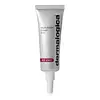What's inside
What's inside
 Key Ingredients
Key Ingredients

 Benefits
Benefits

 Concerns
Concerns

 Ingredients Side-by-side
Ingredients Side-by-side

Cyclopentasiloxane
EmollientDimethicone
EmollientPolysilicone-11
Ascorbic Acid
AntioxidantMica
Cosmetic ColorantButyrospermum Parkii Butter
Skin ConditioningSilica
AbrasiveCI 77891
Cosmetic ColorantCannabis Sativa Seed Oil
EmollientCannabis Sativa Flower/Leaf/Stem Extract
AntioxidantCamellia Sinensis Leaf Extract
AntimicrobialTartaric Acid
BufferingLinoleic Acid
CleansingHydroxyapatite
AbrasiveCholesterol
EmollientSqualane
EmollientCreatine
Skin ConditioningCaffeine
Skin ConditioningMagnolia Grandiflora Bark Extract
AntimicrobialSodium Hyaluronate
HumectantGlabridin
BleachingOrmenis Multicaulis Oil
MaskingPentaerythrityl Tetraisostearate
EmollientSalvia Sclarea Oil
MaskingHordeum Vulgare Extract
EmollientCI 77491
Cosmetic ColorantTriticum Vulgare Germ Oil
EmollientCyclopentasiloxane, Dimethicone, Polysilicone-11, Ascorbic Acid, Mica, Butyrospermum Parkii Butter, Silica, CI 77891, Cannabis Sativa Seed Oil, Cannabis Sativa Flower/Leaf/Stem Extract, Camellia Sinensis Leaf Extract, Tartaric Acid, Linoleic Acid, Hydroxyapatite, Cholesterol, Squalane, Creatine, Caffeine, Magnolia Grandiflora Bark Extract, Sodium Hyaluronate, Glabridin, Ormenis Multicaulis Oil, Pentaerythrityl Tetraisostearate, Salvia Sclarea Oil, Hordeum Vulgare Extract, CI 77491, Triticum Vulgare Germ Oil
Cyclopentasiloxane
EmollientBis-Diglyceryl Polyacyladipate-2
EmollientDimethicone Crosspolymer
Emulsion StabilisingCetyl Ethylhexanoate
EmollientPolylactic Acid
AbrasiveTocopheryl Acetate
AntioxidantCaprylic/Capric Triglyceride
MaskingCamellia Sinensis Leaf Extract
AntimicrobialChamomilla Recutita Extract
Skin ConditioningSpilanthes Acmella Flower Extract
Skin ConditioningCorallina Officinalis Extract
Skin ConditioningCarthamus Tinctorius Seed Oil
MaskingVitis Vinifera Seed Oil
EmollientAscorbic Acid
AntioxidantGlycyrrhetinic Acid
Skin ConditioningBoron Nitride
AbsorbentRetinyl Palmitate
Skin ConditioningTocopherol
AntioxidantHydrogenated Soybean Oil
EmollientBenzyl Alcohol
PerfumingAroma
Cyclopentasiloxane, Bis-Diglyceryl Polyacyladipate-2, Dimethicone Crosspolymer, Cetyl Ethylhexanoate, Polylactic Acid, Tocopheryl Acetate, Caprylic/Capric Triglyceride, Camellia Sinensis Leaf Extract, Chamomilla Recutita Extract, Spilanthes Acmella Flower Extract, Corallina Officinalis Extract, Carthamus Tinctorius Seed Oil, Vitis Vinifera Seed Oil, Ascorbic Acid, Glycyrrhetinic Acid, Boron Nitride, Retinyl Palmitate, Tocopherol, Hydrogenated Soybean Oil, Benzyl Alcohol, Aroma
 Reviews
Reviews

Alternatives
Ingredients Explained
These ingredients are found in both products.
Ingredients higher up in an ingredient list are typically present in a larger amount.
Ascorbic Acid is is pure Vitamin C. This form makes up the largest amount of vitamin C found naturally in our skin.
Not only is vitamin C great for your overall health and immune system, it also has plenty of benefits on your skin.
Vitamin C is best used for brightening skin. It improves dark spots, acne scars, and hyperpigmentation. This is because it blocks the process of skin darkening when exposed to UV.
Remember: Vitamin C should not replace sunscreen!
Your skin uses vitamin C to build collagen. Collagen is one key component in having a strong skin barrier and plump skin. Vitamin C also plays a role in regulating collagen, thus making it effective in improving wrinkles and fine lines.
Ascorbic acid shows potent antioxidant activity. As an antioxidant, it helps fight free-radicals. Free-radicals are molecules that may damage your skin cells. These antioxidants also protect skin against UV damage.
The best formulations include Vitamin E and/or ferulic acid. These two ingredients help stabilize and provide a boost in the benefits of ascorbic acid. This is because ascorbic acid becomes unstable when exposed to UV and air. In fact, you can tell your ascorbic acid has oxidized when it turns an orange-yellow color.
Ascorbic acid is generally compatible with other ingredients. However, using ascorbic acid with other active ingredients might cause irritation. Two ingredients: copper ions and benzoyl peroxide, will inactivate ascorbic acid completely.
Read more about other types of Vitamin C:
Foods rich with vitamin C include oranges, strawberries, broccoli, bell peppers, and more. When consuming Vitamin C, your skin receives a portion of the nutrients.
Learn more about Ascorbic AcidCamellia Sinensis Leaf Extract is derived from the leaves of the tea plant. Black tea, green tea, and oolong tea are all harvested from this plant.
This ingredient has many skin benefits:
This ingredient contains polyphenols, a strong antioxidant. Antioxidants help fight off molecules that damage skin cells.
On top of that, the antioxidants in green tea neutralize free-radicals from the sun. This gives the skin some extra UV protection, but should not replace sunscreen.
Many components of tea have anti-inflammatory properties.
Polyphenols and L-theanine help soothe the skin and reduce irritation. The caffeine in Camellia Sinensis Leaf Extract helps calm inflamed blood vessels.
Other compounds found in tea include: Vitamin Bs, linoleic acid, magnesium, calcium, iron, and zinc.
Research has shown both drinking Camellia Sinensis Leaf Tea and applying it to the skin can help boost skin elasticity and hydration. Studies also show using tea extract may reduce sebum, or oil, production.
Learn more about Camellia Sinensis Leaf ExtractCyclopentasiloxane, or D5, is a silicone used to improve texture of products and trap moisture.
D5 is considered lightweight and volatile. Volatile means it evaporates quickly after application. Once evaporated, D5 leaves a thin barrier that helps keep skin hydrated.
It is also an emollient. Emollients help soften the skin and prevent water loss. Silicones create a silky texture in products. D5 helps other ingredients become more spreadable.
Studies show D5 is safe to use in skincare products. We recommend speaking with a skincare professional if you have concerns.
Learn more about Cyclopentasiloxane